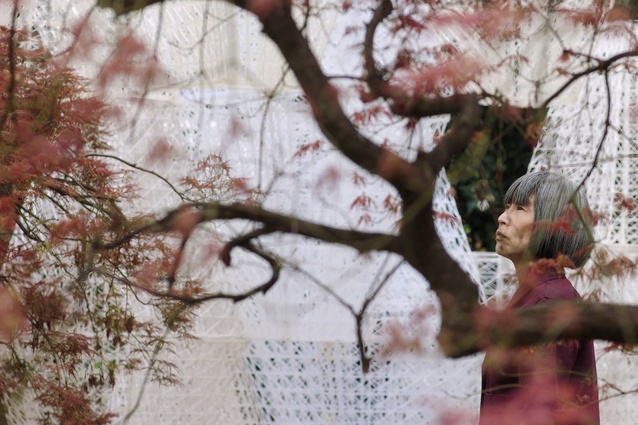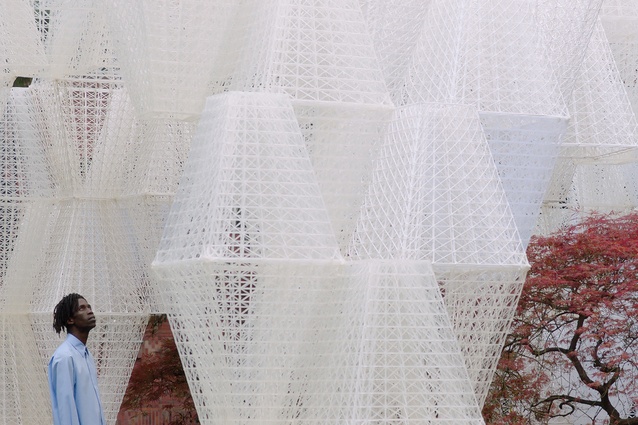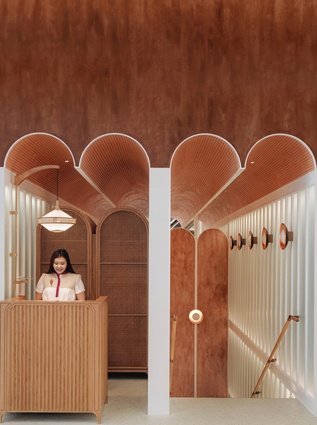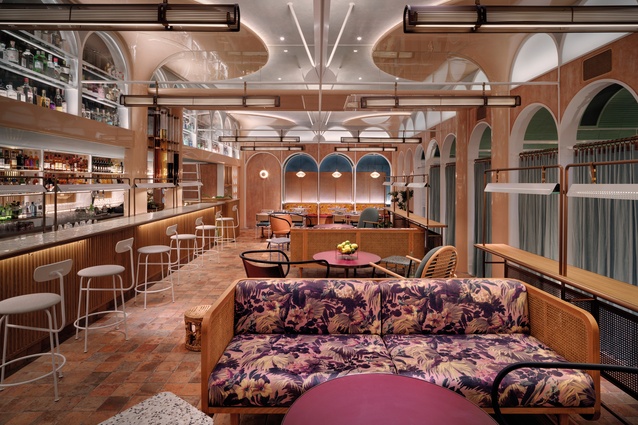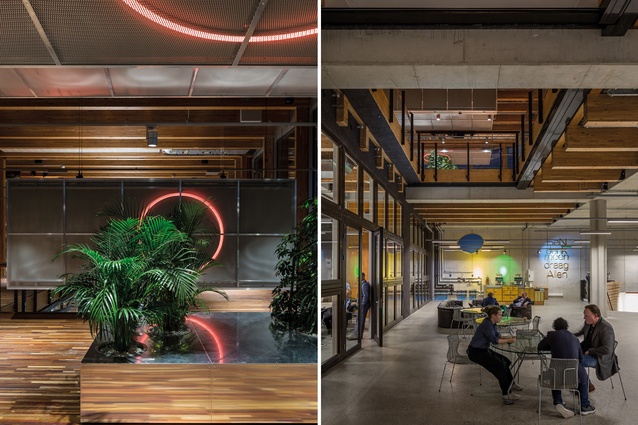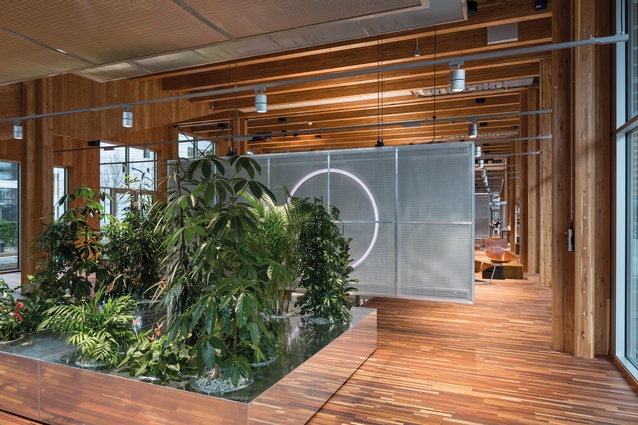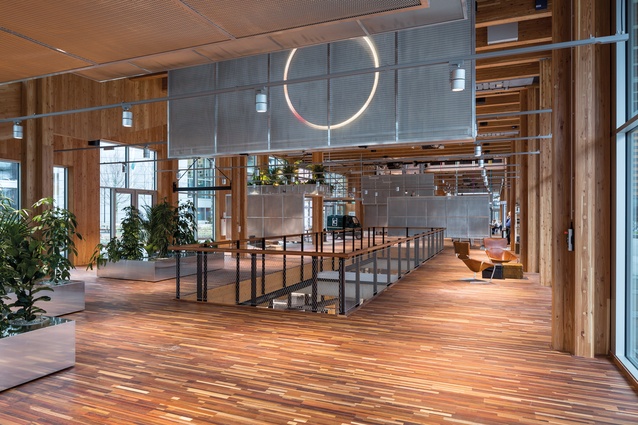From the inside: Sustainability in interiors
What role do interiors play in our quest for sustainability, carbon reduction and helping curb global warming? Tracey Ingram explores three projects that seem to have found some answers.
Let’s hope it’s not just the filter-bubble phenomenon talking, but people seem to be finally awakening to the fragile state of our planet. Late last year, the UN issued a report calling for urgent action against climate change. The world’s leading scientists offered an expiry date of sorts: we apparently have just 12 years to limit global warming to a maximum of 1.5ºC. Any further increase, they reported, runs the risk of irreversible and devastating extreme weather fluctuations. The Guardian responded with a list of practical steps, two of which are directly linked to spatial design: insulate homes and switch to solar panels.
Thankfully, some level of sustainability seems to be – or at least should be – a prerequisite in today’s buildings and interiors. A number of architects are shifting away from constructing with concrete and steel in favour of sustainable wood. The most consumed material in the world after water, concrete is responsible for around 8 per cent of the planet’s carbon-dioxide emissions, while steel is liable for 6 per cent.
On the other hand, some designers are embracing the idea of radical reuse, realising that stripping an interior of existing materials and replacing them with sustainable ones may technically make implementing a new scheme easier – plus the use of sustainable materials looks good on paper and in the media – but the process defeats the purpose. Spacon & X adopted the radical reuse model for SPACE10 in Copenhagen, updating the wood from the research-and-design lab’s original office to suit the refit.

One major challenge is that there are many parties and aspects involved in the building process – from design through to materials, construction and beyond. What happens at each step along the way? And how do you control everything from the sourcing of materials to the disposal of excess. Better yet: how do you make sure there’s no excess at all?
In light of the current state of affairs, there are murmurs of a new conversation; tomorrow’s buildings shouldn’t be merely ‘zero emission’, they should be ‘negative emission’. In short, they should generate more energy than they consume. We’re starting to see the seedlings of such initiatives.
Architecture firm Snøhetta is a member of Powerhouse, a collaborative group that develops energy-positive buildings, and its sustainable Svart hotel in Norway represents just one result of the group’s research. The hotel considers everything from the energy embedded in any materials used to the ways in which the building can best harness natural resources, such as sunlight and wind. Snøhetta hopes the project, due for completion in 2021, can serve as a benchmark for what’s to come. In the meantime, how are spatial designers tackling sustainability today?
Cos X Mamou-Mani
Flexibility and future use are just as important – if not more so – when it comes to event design. The sheer temporality of this industry poses sustainability problems. The situation prompted the Dutch designers at Bureau Sla and Overtreders W to develop a closed-loop pavilion for 2017 Dutch Design Week. After the event, all materials were either returned to suppliers or reused in other projects.
This People’s Pavilion was a short-term structure, but what if the idea of loaning building supplies extended to more-permanent projects? Similarly, installations at more-recent design fairs have used the events as platforms for raising awareness surrounding sustainability. The preoccupation with newness – Dutch designer Marcel Wanders calls it ‘baby-face fixation’ – runs rife in the furniture industry.
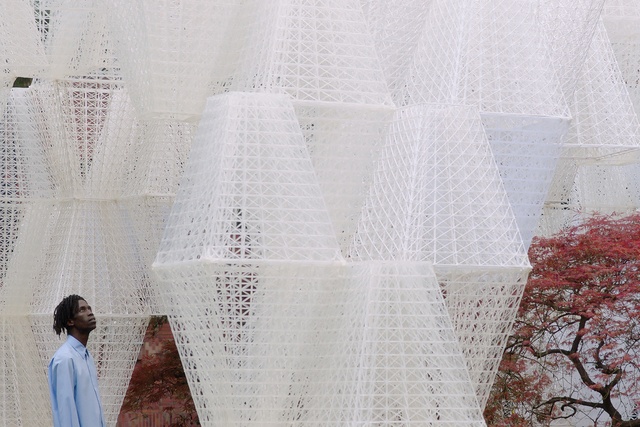
Its presence is explicit during Milan Design Week, where manufacturers vie to show the greatest number of fresh releases. This year, fashion brand Cos teamed up with London-based French architect Arthur Mamou-Mani to focus on a more-valuable type of newness: new – and, more importantly, sustainable – materials.
Inspired by the structure of pine cones, Conifera comprises 700 interlocking modular bio-bricks. Whereas standard plastics are based on fossil fuels, Conifera’s are made from compostable bioplastic; the latter requires 68 per cent fewer carbon emissions to generate. “The material can go back to the earth,” says Mamou-Mani.
“It can be part of a democratic life cycle.” Still, 68 per cent fewer emissions does not equal zero. But, because the structure is modular, elements can be reused in the future. “Reusing and recycling is always best,” says Mamou-Mani, “but some of Conifera will be composted. Milan has the largest composting facility in Europe.”
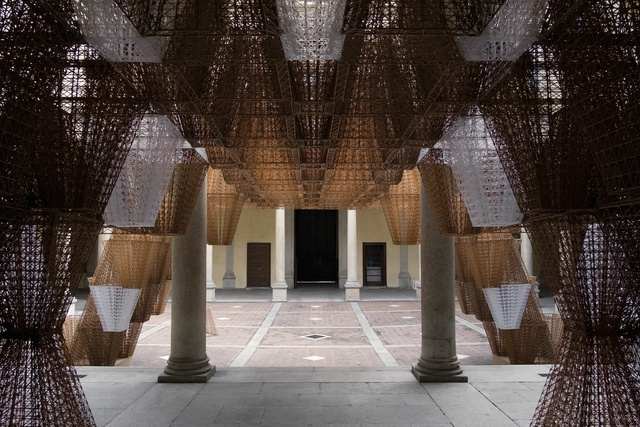
The architect has a greater goal in mind, though; ideally, individuals would grow their own hydroponic corn at home, turning the scraps into bioplastic. With that, they could make their own containers, which could eventually be composted to help to grow more corn. “Designers need to be interested in the life cycles of materials,” says Mamou-Mani, who adds that the field of bioplastics is so new that we’re just starting to scratch the surface of what’s possible.
Will we begin to adopt them or not? Posing that question is one of the purposes of Conifera. “It’s certainly my hope,” says Mamou-Mani. “Right now, we can talk about the prospect and encourage people.”
Linehouse
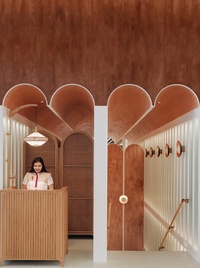
The designers at Linehouse believe the key to acting sustainably is to be mindful, and to make the most informed choices possible about materials and fixtures when specifying. Founded by Chinese-Swedish designer Alex Mok and New Zealander Briar Hickling in 2013, the Hong Kong- and Shanghai-based practice strives to use as many locally sourced materials as possible.
“We also incorporate existing and discarded materials,” says Hickling, “repurposing them in new, innovative ways that don’t involve high levels of processing.”
In Hong Kong, Linehouse infused its sustainability goals into contemporary dim sum restaurant John Anthony without sacrificing the spatial narrative. “The materials were so important,” says Hickling, “both in terms of sustainable sourcing and because each one represented a piece of the story.”
The designers imagined that the restaurant’s namesake hailed from a humble and hard-working background; materials such as hand-dyed indigo fabric from Lantau Island in Hong Kong, hand-applied terracotta render and old terracotta flooring would have been familiar to him.“As a team, we spent a lot of time working with and talking to suppliers to ensure we chose appropriate materials,” says Hickling.
The floor tiles, for example, were reclaimed from demolished houses in the Fujian province. Hickling tells me that suppliers buy these seemingly worthless materials, and then clean them and sell them on. “When they arrived on site, the tiles were all different thicknesses. We also incorporated handmade terracotta tiles, with burn marks remaining from time spent stacked up in the kiln. We love all of these imperfections.”
Hickling says it helps when clients share Linehouse’s ethos and awareness. “At the end of the day, it can’t be just our vision to have a sustainable approach. It also needs to infiltrate each step of the design and construction processes; designers can help to educate and inform about the latter.”
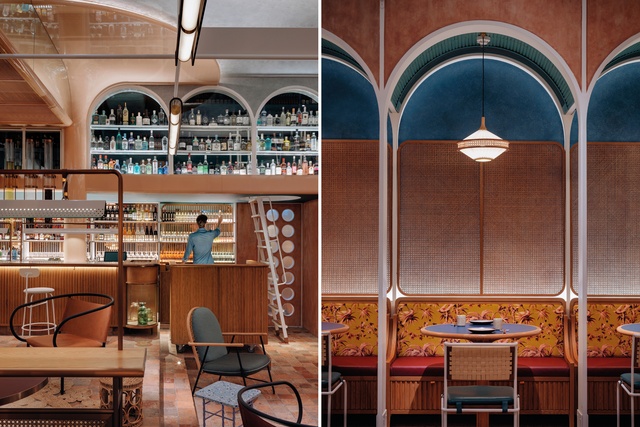
It is, therefore, not just a matter of the space itself. At John Anthony, upcycled plastic and paper became coasters and menus. The kitchen uses traceable ingredients from sustainable food suppliers and employs equipment to reduce energy usage. Wines and spirits are sourced from environmentally responsible vineyards and craft distilleries. “We need to stop using the word sustainability and start talking about responsibility.”
Linehouse also believes it’s high time we change the perception of longevity and people’s expectations of how long things should last. The studio designs a lot of hospitality projects, where “time lines are always very short, just like the lifespans of the projects”, says Hickling. “I hope that, in the future, we can further develop sustainable hospitality projects that have stronger senses of permanence.”
DoepelStrijkers
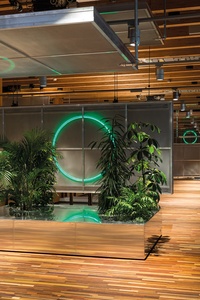
Dutch-based design studio DoepelStrijkers has long dabbled in reuse. The studio turned heads in 2010 with Haka, whose industrial-chic interior includes waste materials from demolition sites and waste products from production processes. The result? A drastic reduction in CO2, and material and labour costs when compared with a traditionally built interior.
DoepelStrijkers has continued down this path and, in 2017, Circl represented the culmination of the studio’s research. True to its name, the multi-purpose pavilion in Amsterdam’s business district explores the circular economy: a system that strives to overturn the worrisome single-use mentality.
Among the many forward-thinking elements in the pavilion – an initiative by Dutch bank ABN Amro – are acoustic textile plaster for walls and ceilings made from old company uniforms, hardwood once seen underfoot in a monastery and pre-loved displays from Amsterdam’s Museum of Modern Art. DoepelStrijkers also thought further ahead in a more literal sense. A series of movable panels enables Circl to shift function seamlessly.
“Interior concepts that can be changed according to future needs are automatically more future proof,” says founding partner Eline Strijkers. And, because the panels were constructed with ‘dry’ connections – no adhesive or bonding agents in sight – the materials can be reused in later projects.
While some sustainable elements may seem skin-deep, Circl’s bones and veins are equally considered. LED lights are powered by rooftop solar panels, making energy-consuming adaptors unnecessary, and a subterranean geothermal system developed with tech experts from a Dutch university controls the interior temperature.
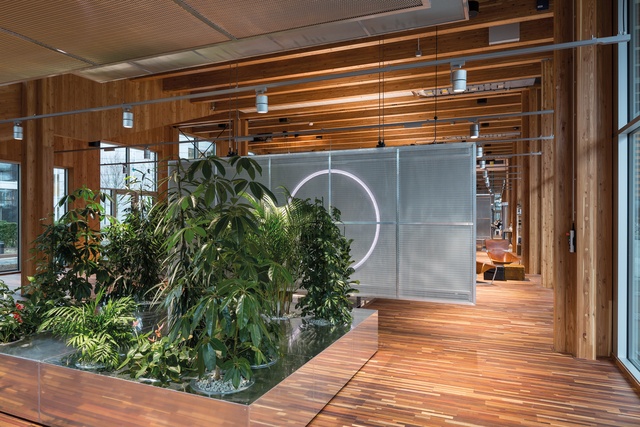
DoepelStrijkers is expanding on Circl’s ideas for Expo 2022 Floriade, a decennial international exhibition and horticultural festival held in the Netherlands. The studio’s ambition to build a circular, nature-based building is visible in the Innovation Pavilion’s form and materials. Atop a huge slab of earth that forms the roof – a year-round solution to indoor-climate regulation – is a winter garden, which controls natural ventilation. To keep the CO2 footprint to an absolute minimum, DoepelStrijkers’ design incorporates next-generation geopolymers and bio-based materials.
“The beauty of our profession is the ability to react to the specifics of a place and a culture,” says Strijkers, “to dive deep into local conditions and challenges, and respond with tailor-made design solutions. We believe that human health should be the primary indicator for measuring sustainability. In the search for creating healthy environments in which people function better, such related aspects as material use and energy efficiency must be considered equally.”
This article first appeared in Interior magazine.


